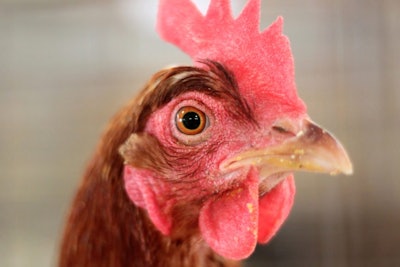
Every year, Industria Avícola presents its special edition of Top Poultry Companies. The publication includes compilations of the most important poultry industry data in 18 selected countries in Latin America, according to results from the previous year.
It is not only a compilation of the poultry production figures — including broilers, layers and turkeys — of these 18 Latin American countries, but it also offers statistics about the evolution of poultry production in the last five years, the per capita consumption of poultry products and a summary of the most outstanding poultry companies in each country.
Below, here is a summary of the most notable statistics in this edition of Industria Avícola Abril 2019: Empresas Líderes.
Broiler production
- In 2018, broiler production in Latin America decreased by 1.42 percent compared to 2017. The decline was due, in part, to the reduction in production in countries such as Brazil, Argentina and Venezuela. Production went from 11.925 billion slaughtered in 18 Latin American countries in 2017 to 11.755 billion in 2018.
- Despite this, between 2014 and 2018 — a period of five years— poultry production in Latin America grew 2.54 percent.
- Brazil was the Latin American country with the highest broiler production, with 5.829 billion birds slaughtered in 2018, about 270.88 million less than the 6.1 billion slaughtered in 2017. This represents a decrease of 4.4 percent.
- Brazil produces approximately 49.6 percent of the broilers in Latin America.
- Behind Brazil, Mexico is the second biggest broiler producer in Latin America, with 1.837 billion birds slaughtered in 2018, an increase of 6.3 percent compared to 2017.
- Mexico produced 15.6 percent of the broilers in Latin America in 2018.
- Colombia is the third largest broiler producer in Latin America, with 804 million birds slaughtered, 3.9 percent more than in 2017.
- In fourth place of broiler production is Peru, with 764.18 million chickens slaughtered, an increase of 8.7 percent over 2017. Peru went up one place compared to 2017 top 5 broiler producers in the region.
- Lowering a ranking with respect to 2017, in the fifth position of broiler production in Latin America is Argentina, with 711.5 million birds slaughtered in 2018, 1.5 percent less than the previous year.
- Argentina and Brazil were not the only Latin American countries to report losses in chicken production in 2018 compared to 2017. Again, Venezuela is the Latin American country with the largest decline in broiler production, producing 58.3 percent less than in 2017 (down from 252.67 million broilers in 2017 to 105.37 million in 2018). From seventh place in broiler production in 2017, Venezuela fell in 2018 to the 12th place.
- Uruguay also had a decline of 7.3 percent from 2017 to 2018, reducing the production of 32.2 million broilers slaughtered to 29.84 million.
- In addition, the Dominican Republic reduced its broiler production by 2.7 percent from 2017 to 2018, down from 221 million birds slaughtered to 215 million.
- Between 2014 and 2018, the country that reported the highest growth in broiler production was Paraguay, with an increase of 46.6 percent. It went from producing 49.6 million chickens in 2014 to 71.21 million in 2018.
- Behind Paraguay, the country with the second highest growth in a period of five years was Peru, reporting an increase of 34.5 percent.
- The country with the third highest growth between 2014 and 2018 was Bolivia, with an increase of 26.1 percent in broiler production.
- After Bolivia, Guatemala ranked fourth in growth in broiler production in five years, with a rise of 24.6 percent.
- Despite the decline it reported from 2017 to 2018, the Dominican Republic was the fifth Latin American country with the highest growth in broiler production in five years, up 23.6 percent.
- Other Latin American countries that reported double-digit increases in broiler production between 2014 and 2018 were: Mexico (20.4 percent), Chile (19 percent), Ecuador (17.4 percent), and Colombia (14.9 percent).
- There were also three countries that reported losses or zero gains in this five-year period. The first one is Venezuela, with a production loss of 82 percent, followed by Argentina, with a 16.3 percent reduction in broiler production, and Costa Rica, which reported practically the same figures in 2014 and 2018.
Layers in production
- As for the layers in production in Latin America, in 2018 there was a growth of 1.6 percent when compared to 2017. Latin America went from having 463.35 million layers in production in 2017 to 470.65 million in 2018.
- Between 2014 and 2018, the number of layers in Latin America increased by 11.7 percent.
- The country with the largest number of layers in production in 2018 was Mexico, with 163 million. This means that Mexico is home to 34.6 percent of the layers in production in Latin America.
- Mexico went from having 158.7 million layers in production in 2017 to 163 million in 2018, an increase of 2.7 percent.
- Ranking behind Mexico was Brazil, with 105 million layers in production, which means that it owns 22.3 percent of laying hens in Latin America.
- The figures presented by Brazil in 2018 are similar to those of 2017, so the change from one year to another is basically 0.
- In third place is Argentina, with 42.4 million layers in production. This is a reduction of 4.1 percent when compared to 2017.
- As in 2017, in the fourth place is Colombia, with 41 million layers in production, a decrease of 4.7 percent when compared to the year before.
- In fifth place was Peru, with 27.3 million layers in production, an increase of 5.8 percent over 2017.
- In 2018, Guatemala rose three places compared to 2017, to rank seventh in the production of layers, with 13.1 million hens. Guatemala reported an increase of 54.1 percent over 2017, when it had 8.5 million layers, the most significant increase within the 18 countries analyzed.
- Other Latin American countries that reported double-digit increases from 2017 to 2018 were: Ecuador (31.6 percent), Costa Rica (21.2 percent) and Uruguay (14.3 percent).
- Colombia and Argentina weren't the only countries to report decreases in the number of layers in production. The following countries also reduced their figures for 2017: Venezuela (-25.9 percent) and El Salvador (-25 percent).
- From 2014 to 2018, the Latin American country with the largest increase in the number of layers in production was Bolivia, going from 3.97 million hens in 2014 to 8.69 million in 2018, an increase of 118.9 percent.
- Behind Bolivia, Guatemala was the second largest grower, with an increase of 71.5 percent in the number of layers in production: from 7.64 million in 2014 to 13.1 million in 2018.
- The Latin American country with the third highest growth of layers in production in a period of five years was Peru, with a rise of 70.6 percent: from 16 million layers in 2014 to 27.3 million in 2018.
- In fourth place in terms of growth was Costa Rica, with an increase of 42.6 percent: from 2.89 million layers in 2014 to 4.12 million in 2018.
- Chile is the Latin American country to report the fifth largest increase in the number of layers in production, with an increase of 34.5 percent: from 12 million layers in 2014 to 16.14 million in 2018.
- Other countries with double-digit increases in the number of layers in production in a period of five years were: Paraguay (32 percent), Nicaragua (22.2 percent), Colombia (18.2 percent), Honduras (12.5 percent), Brazil (11.7 percent) and the Dominican Republic (10.8 percent).
- There were some countries that reported losses in a period of five years. Venezuela was the one that had the largest decrease of layers in production with a drop of 52.9 percent. Venezuela used to have 21.21 million layers in production in 2014 and reduced to 10 million in 2018.
- Other countries with a reduction in layers in production were El Salvador (-4 percent) and Panama (-0.04 percent).
Turkey production
- Industria Avícola depends on turkey production figures shared by countries and poultry organizations, so production numbers are not reported for every year. However, if we extrapolate from data collected in 2017 and 2018, there’s a decline in turkey production by 19.3 percent. In 2017, about 61.3 million turkeys were slaughtered in Latin America, while in 2018, the figure reached 49.49 million.
- The leading turkey producing country in Latin America is Brazil, with 31 million turkeys slaughtered in 2018. This is 28.7 percent less than the amount reported in 2017, which was 43.5 million.
- Despite the significant reduction in production, Brazil produces 62.6 percent of the turkeys in Latin America.
- In the second place regarding turkey production in Latin America is Chile, with 9.81 million turkeys slaughtered in 2018. This is a decrease of 2 percent compared to 2017, when they sacrificed 10.01 million birds.
- Peru ranks third in turkey production in the region, with 4.74 million turkeys slaughtered in 2018. This represents an increase of 1.7 percent over 2017.
- In fourth place is Mexico, with 1.48 million turkeys produced in 2018, an increase of 22.3 percent compared to 2017.
- Going down the ladder with respect to 2017, in the place regarding turkey production is Ecuador, with 1.25 million of turkeys slaughtered. This is a decrease of 10.7 percent compared to 2017.
- Although last year, figures were not available for this country, in 2018, Venezuela ranked sixth in turkey production in Latin America, with 0.7 million birds. This is a reduction of 57 percent compared to the turkeys produced in 2016.
- In seventh place is Colombia, with a production of 0.4 million turkeys, similar to the previous year, so the change is 0.
- In the eighth position is the last Latin American country to report turkey production: Costa Rica, with 0.12 million birds. This figure is similar to that of 2017, so the change is also 0.

















